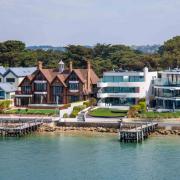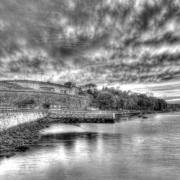From meteor showers to starry jewel boxes, astronomer Bob Mizon tells us what to look for in Dorset’s dark skies this month
The Perseids meteor shower: 11-13 August
The Perseid meteor stream is at its most active between 11 – 13 August. Patient observers might see these particles of dust from space barrelling swiftly through the atmosphere, becoming more numerous as the night wears on. Look slowly around the sky, mostly to the north-east, and keep binoculars handy, as the brightest of these ‘shooting stars’ can leave slowly fading, ghostly trails behind them.
View Venus at dawn: 13 August
Venus, brightest of all the planets, is now at its Greatest Western Elongation, the farthest it gets from the Sun in the morning sky. Look in the eastern sky at dawn for its brilliant light, with the two bright stars of Gemini, Castor and Pollux, away to its left. Venus has a highly reflective acid atmosphere, meaning that it sends out three-quarters of the Sun’s incoming light back into space.
Admire the Jewel Box of the Northern Sky: 19 August
This is the time of New Moon, when it is absent at night as it is in the direction of the Sun in the daytime sky. This means that fainter night-time objects are easier to locate. Look for the glorious Double Cluster of stars in Perseus, sometimes called the ‘Jewel Box of the Northern Sky’. Find out more about the Double Cluster
Find the Teapot of Sagittarius: 25 August
Look to the right of Jupiter and Saturn, the two bright planets in the south, to see, near the horizon, the interesting asterism known as the ‘Teapot of Sagittarius’. Due south at present, it has a distinct ‘spout’, ‘handle’ and ‘lid’. It can be used to point out the direction of the centre of our Milky Way.
Find the five best locations for stargazing in Dorset here




























